What is ferritin?
Ferritin is a blood protein that contains iron.

The body absorbs iron from food. The absorbed iron is primarily used for red blood cell production, while the remaining iron is stored as ferritin in the liver, spleen, muscles, etc.
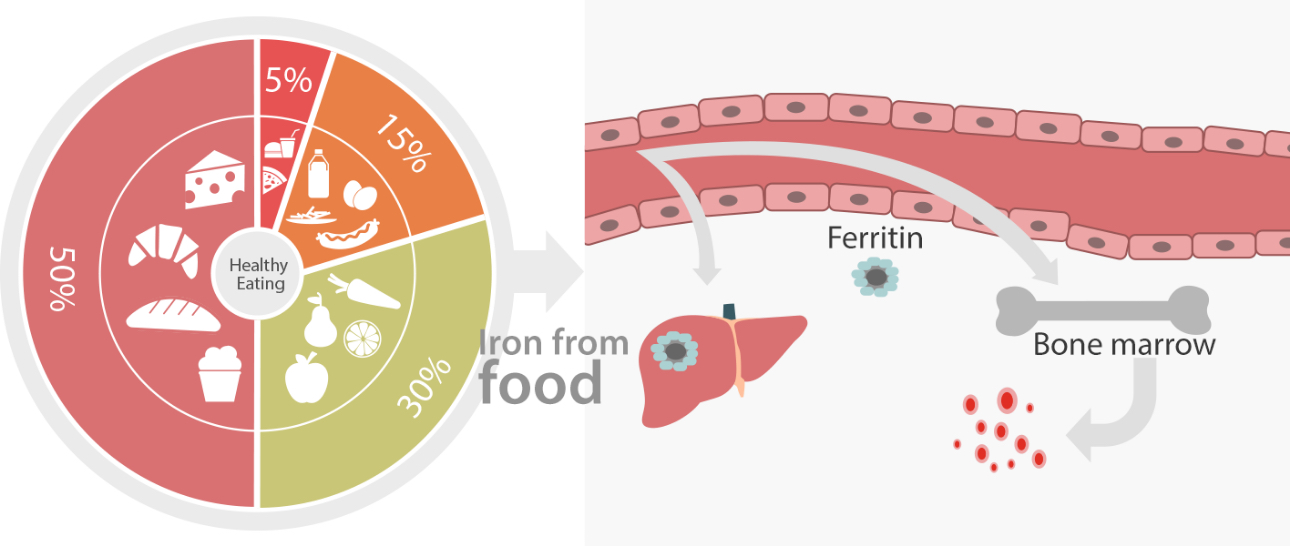
Iron is very important to the way the body works.
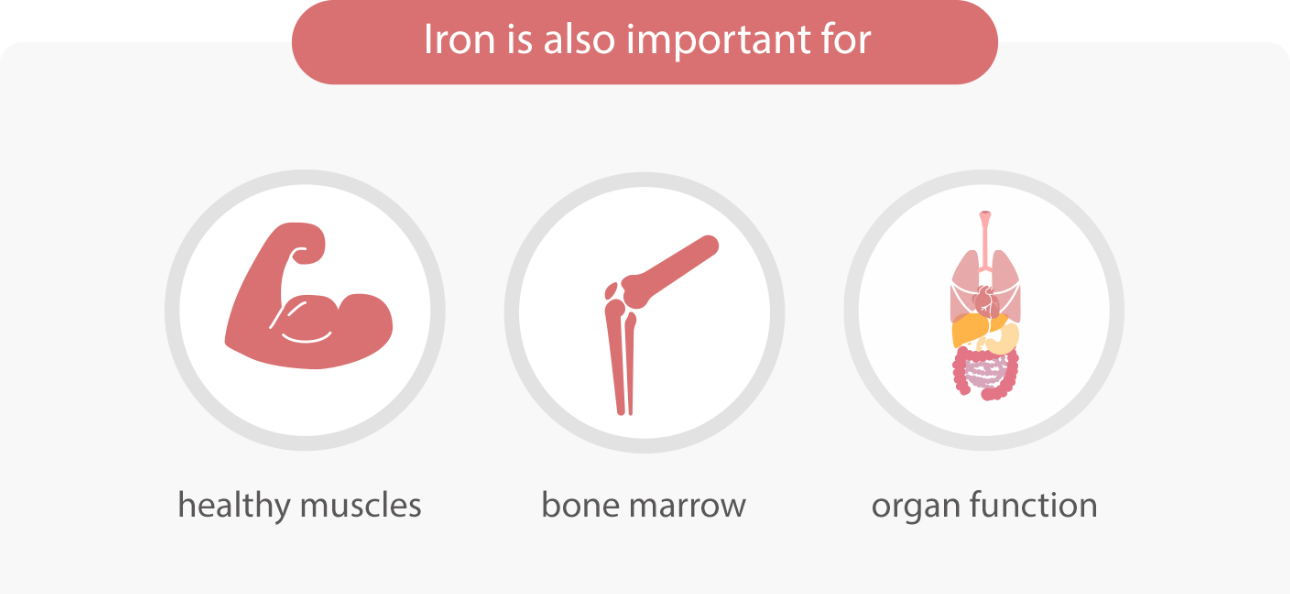
What does a serum ferritin test indicate?
A ferritin test helps your doctor understand how much iron your body stores. If a ferritin test reveals that your blood ferritin level is lower than normal, it indicates your body's iron stores are low and you have iron deficiency. As a result, you could be anemic.
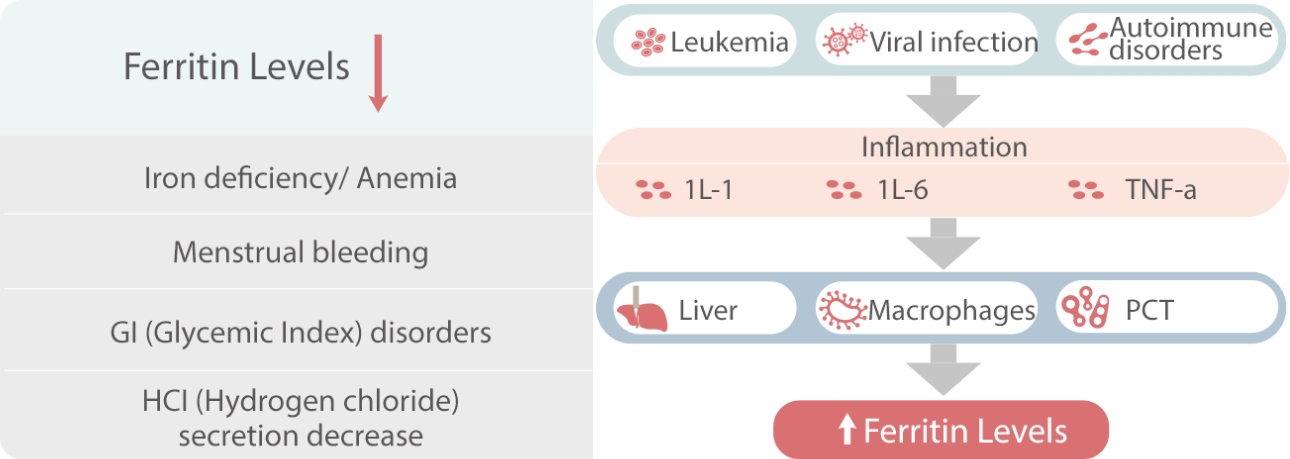
If a ferritin test shows higher than normal levels, it could indicate that you have a condition that causes your body to store too much iron. It could also point to liver disease, rheumatoid arthritis, other inflammatory conditions, or hyperthyroidism. Some types of cancer also can cause your blood ferritin level to be high.
The serum ferritin normal range in your blood is 24 to 336 ng/mL for adult males. 24 to 307 ng/mL for adult females.
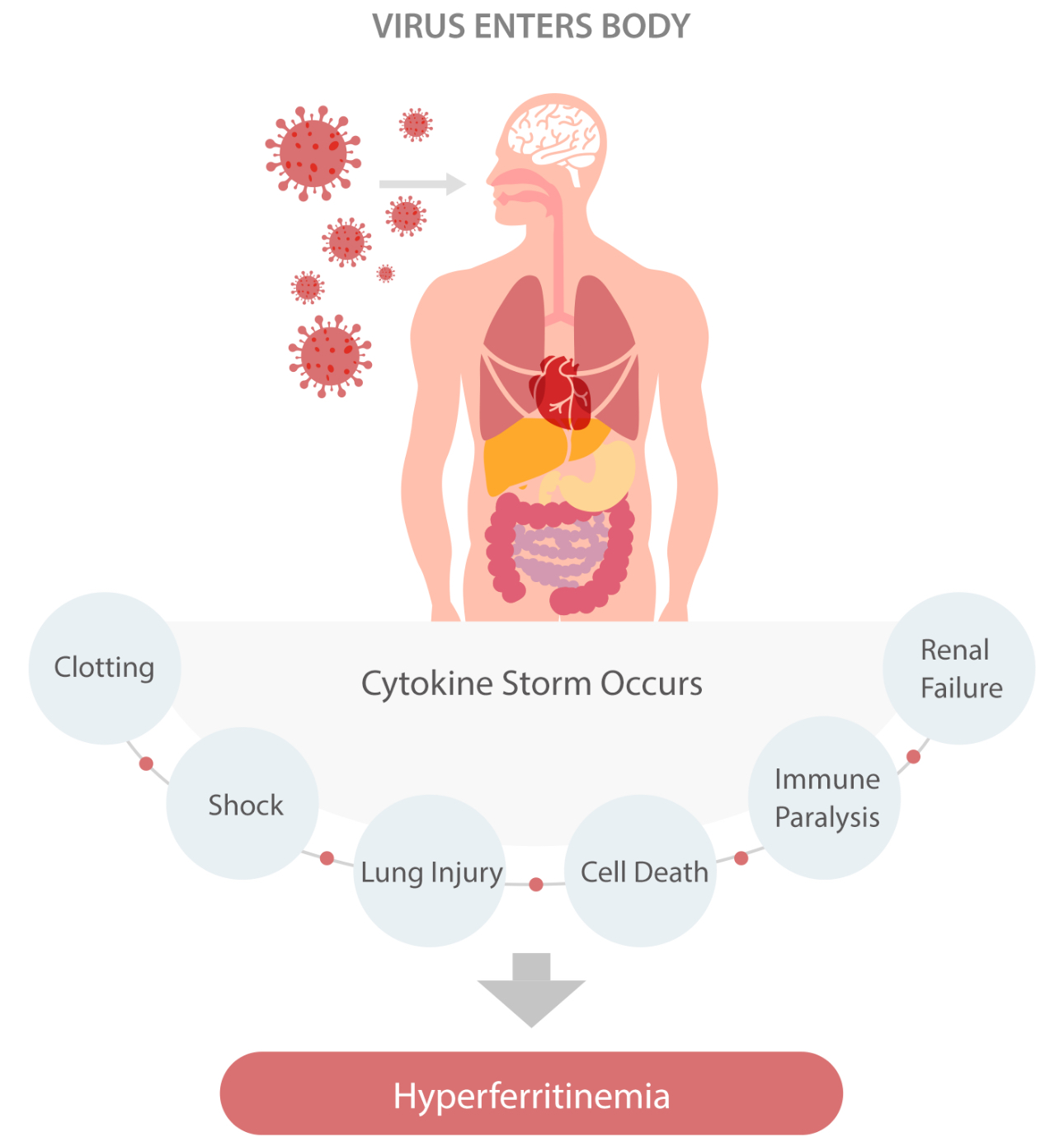
Signs of insufficient levels of ferritin and iron in the body (iron deficiency anemia) encompass:
- Skin appearing paler than usual.
- Fatigue.
- Weakness.
- Dizziness.
- Shortness of breath (dyspnea).
- Accelerated heartbeat (tachycardia).

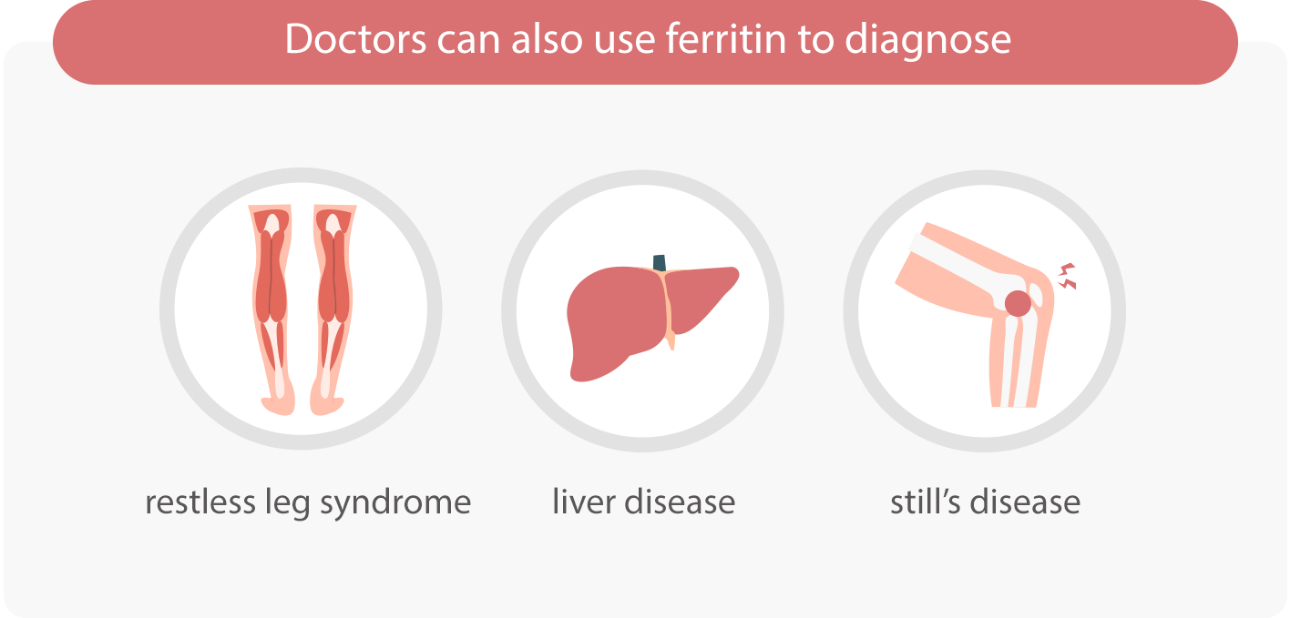
Indications of excessive ferritin and iron levels (hemochromatosis, or iron overload) include:
- Painful joints.
- Cardiac concerns.
- Unexplained
- weight reduction.
- Abdominal discomfort.
- Loss of body hair.
- Reduced sex drive.
- Fatigue or diminished energy levels.
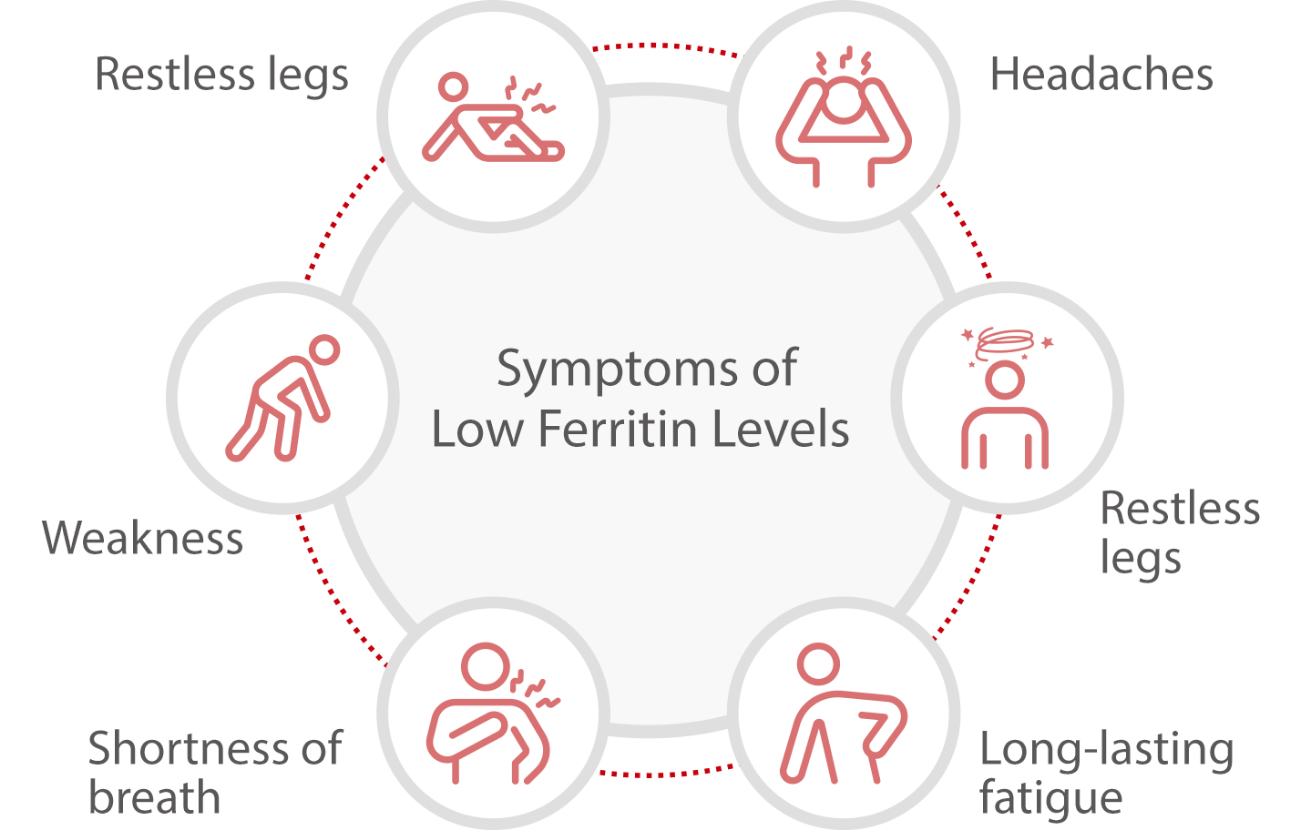
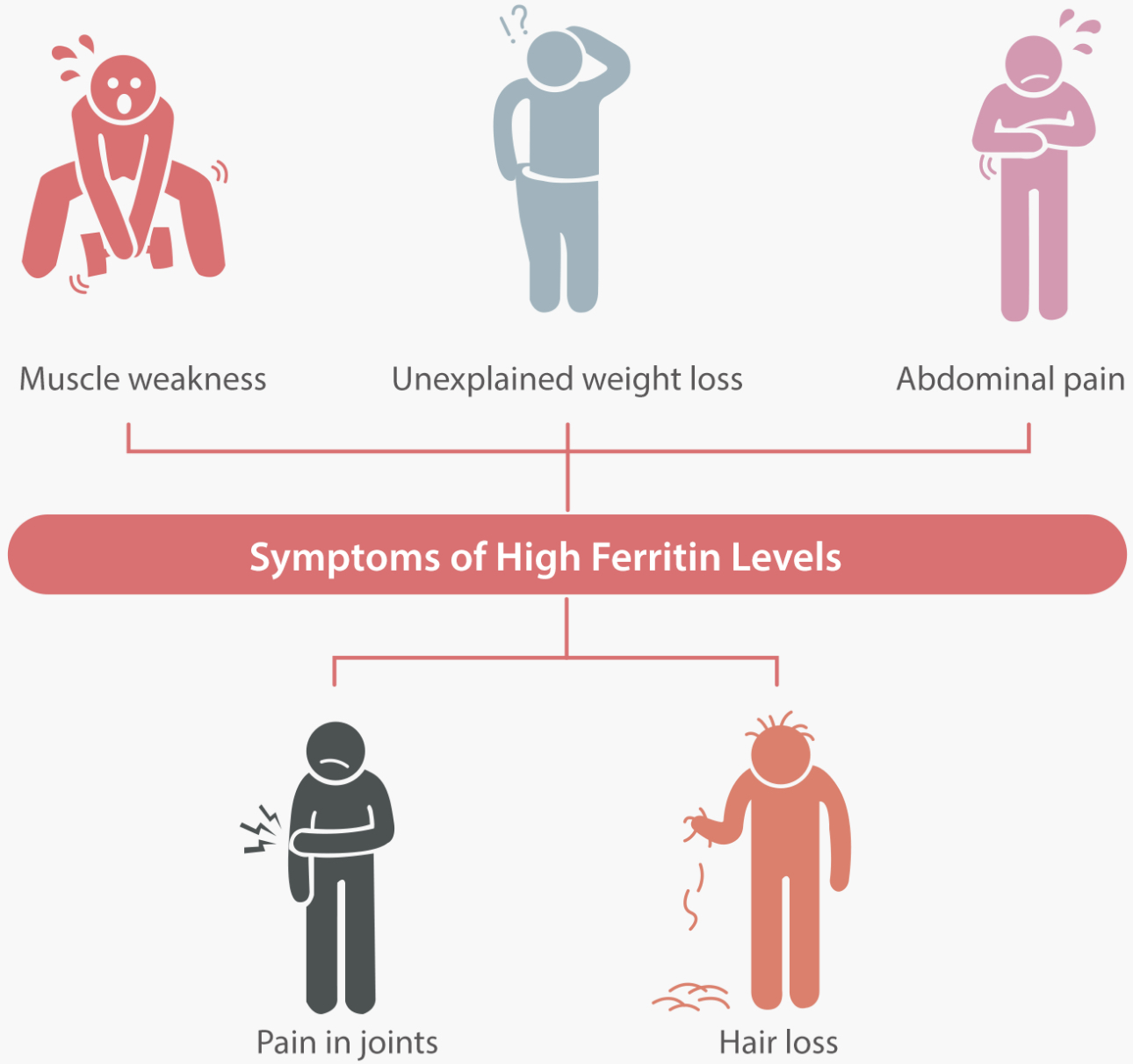
Serum Ferritin in COVID-19:
Studies have shown that elevated levels of ferritin are associated with the severity of COVID-19. High serum ferritin levels (hyperferritinemia) have been linked to worse outcomes in COVID-19 patients.
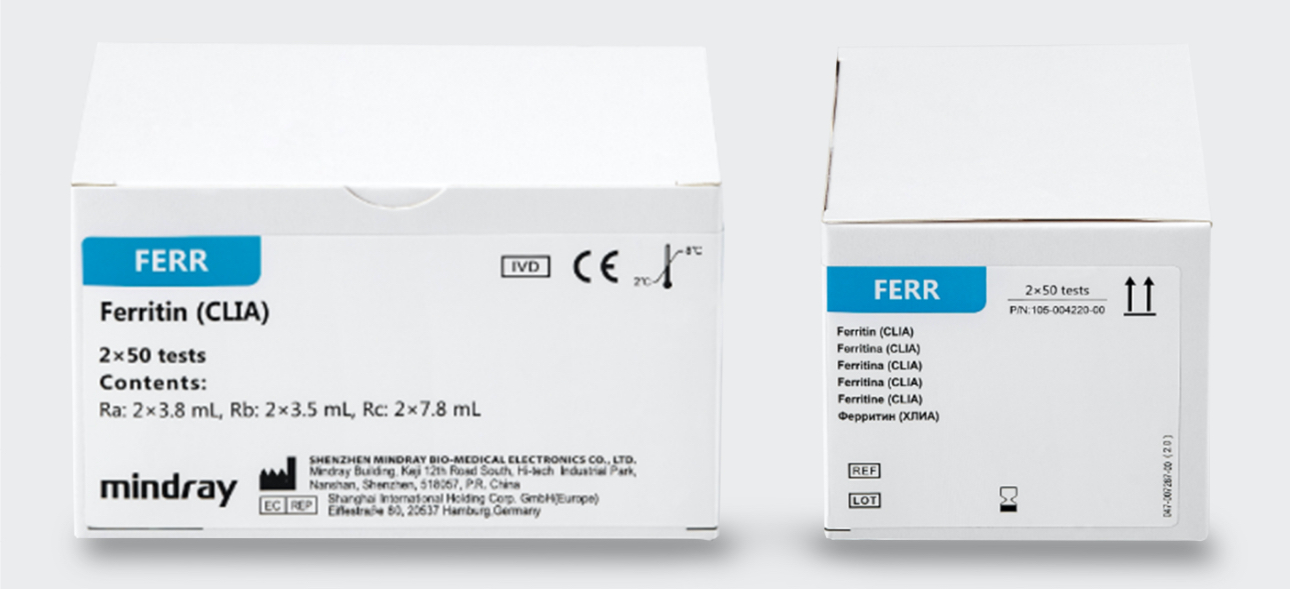
Ferritin plays a significant role in immune dysregulation, particularly during instances of extreme hyperferritinemia. This can lead to
both immune suppression and pro -inflammatory effects, contributing to the
development of a cytokine storm. In cases of COVID-19, fatal outcomes have been linked to cytokine storm syndrome, suggesting that disease severity is closely tied to this syndrome. Notably, individuals with diabetes often have elevated serum ferritin levels, which increases their susceptibility to severe COVID-19 complications.
Thus, hyperferritinemia has been associated with increased illness severity and adverse outcomes in COVID-19.
Mindray Ferritin Assay:
Mindray provides a high-quality assay kit to support the ferritin serum test with great efficiency.
References:
[1] "Ferritin in the coronavirus disease 2019 (COVID‐19): A systematic review and meta‐analysis." Journal of Clinical Laboratory Analysis (2020).
[2] Mea, B , C. Js , and B. Cpa . "Iron: Innocent bystander or vicious culprit in COVID-19 pathogenesis?." International Journal of Infectious Diseases 97(2020):303-305.
[3] Bataille, S. , N. Pedinielli , and J. P. Bergougnioux . "Could ferritin help the screening for COVID-19 in hemodialysis patients?." Kidney International 98.1(2020).
[4] Tang, J. W. , et al. "Comparing hospitalised, community and staff COVID-19 infection rates during the early phase of the evolving COVID-19 epidemic." Journal of Infection (2020).






